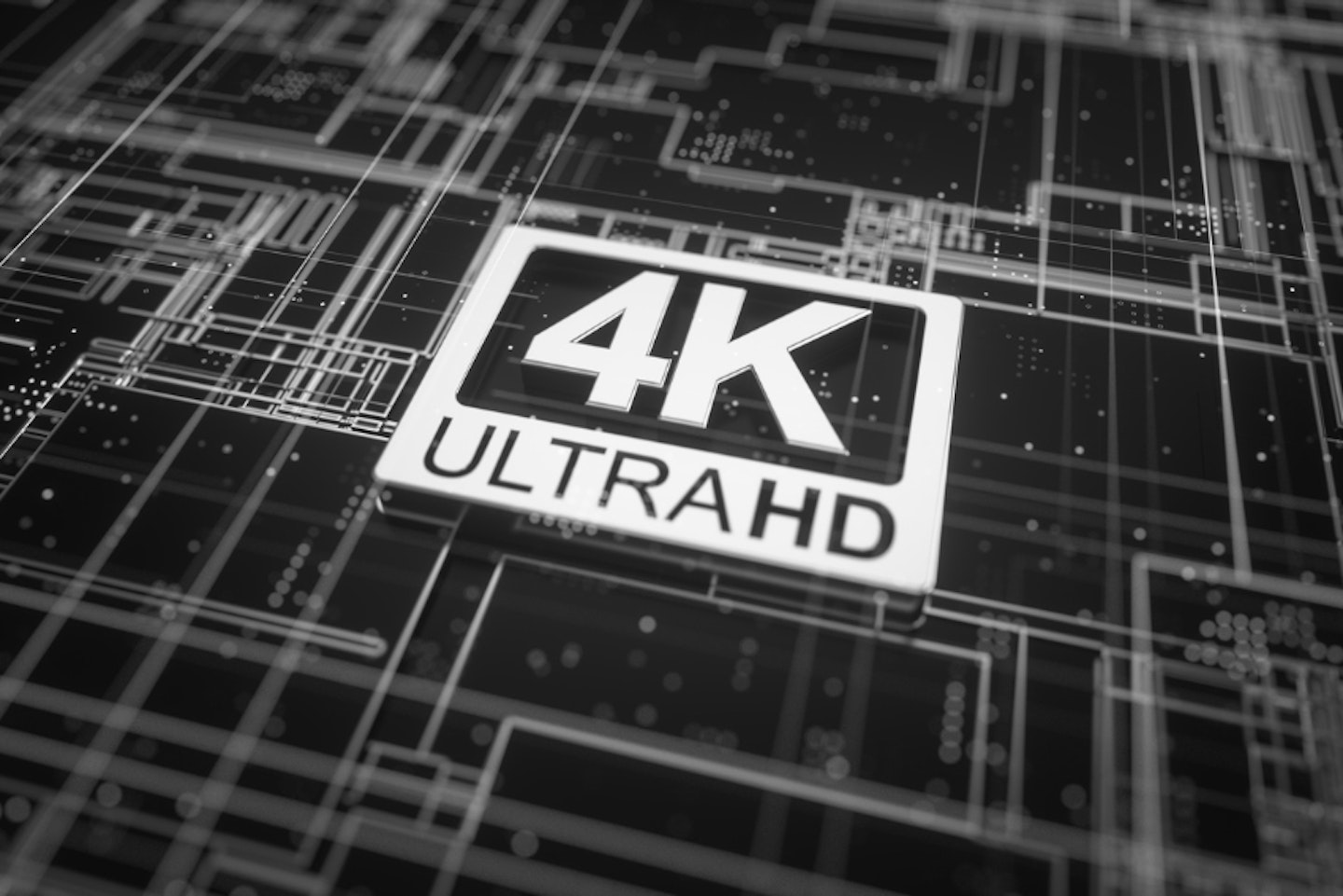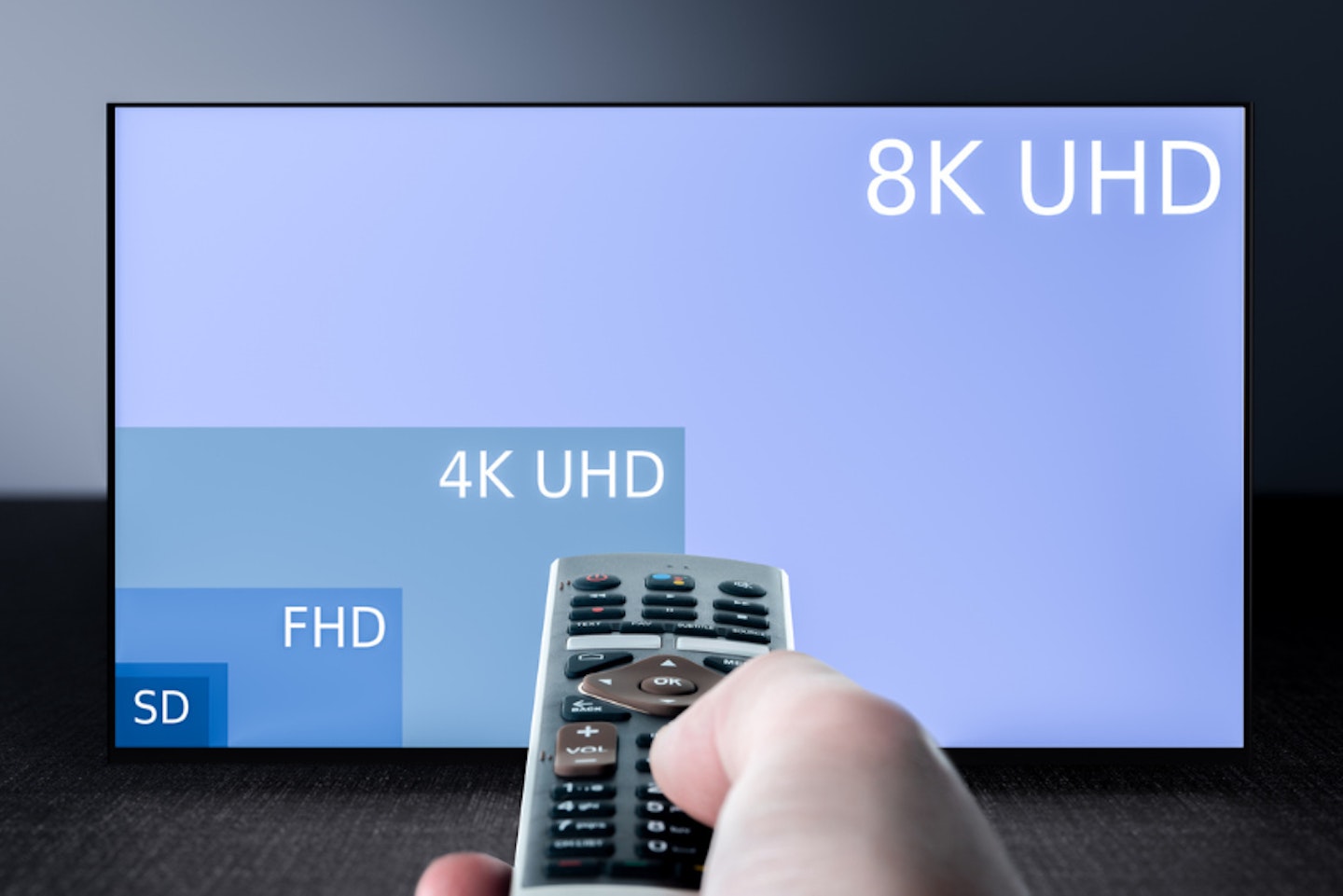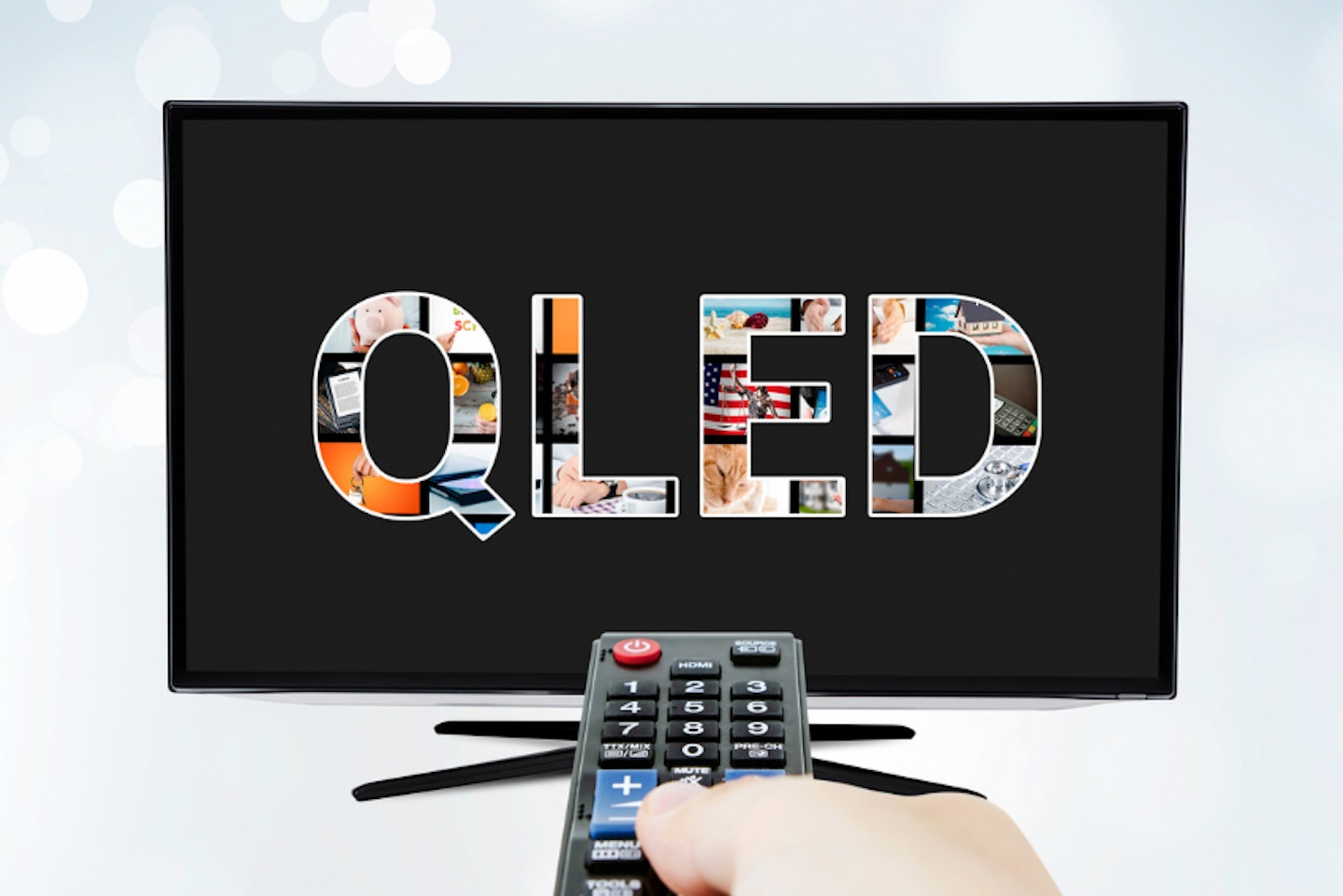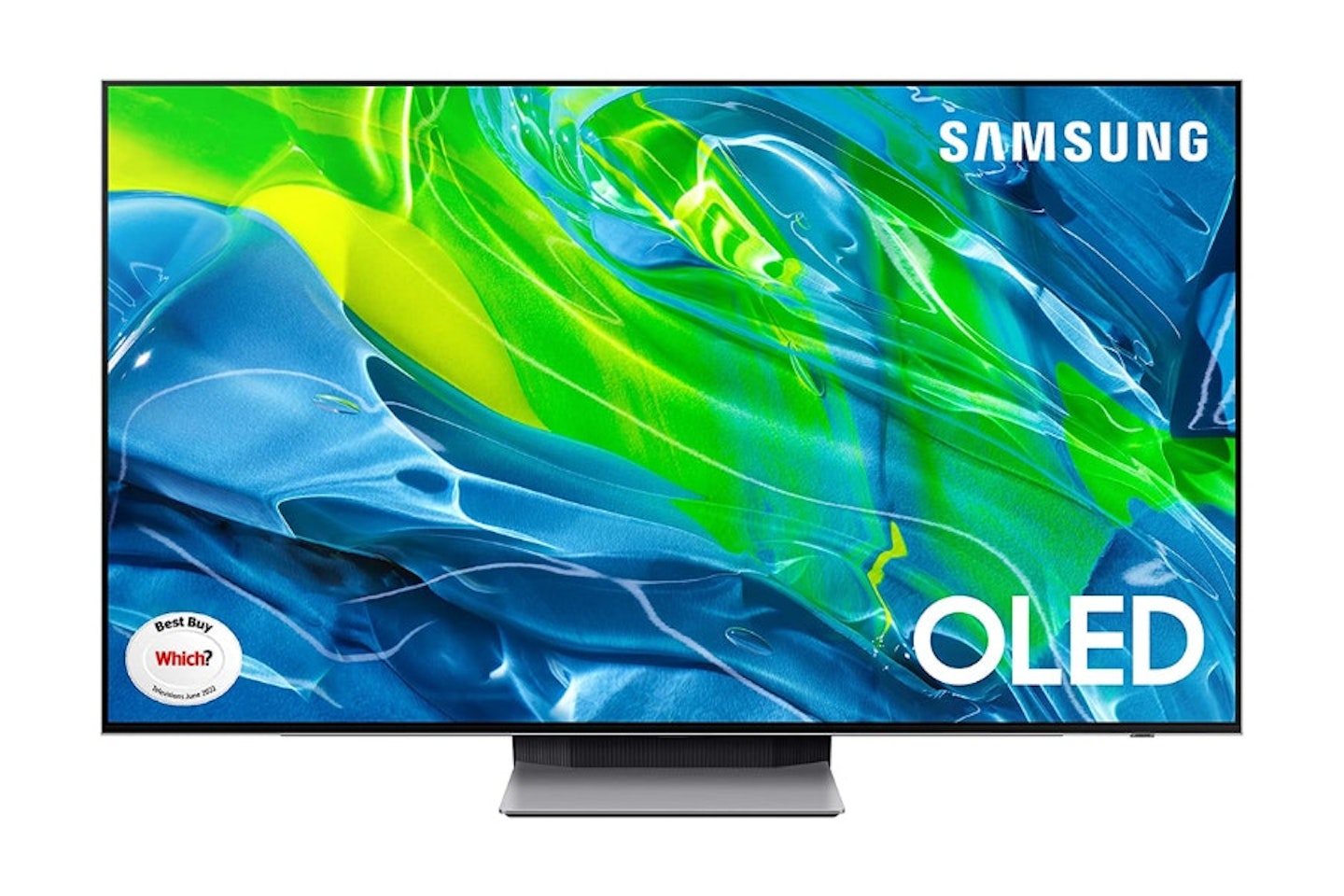Your quest for the best TV probably began with a casual online search, resulting in an array of websites, videos and reviews - enough to make your head spin. Digging in, you’re plunged into a torrent of acronyms and pseudo-scientific technical jargon to make even Bill Gates reach for the paracetamol. A question you never thought you'd ask pops into your head: Is OLED better than 4K?
The answer: OLED and 4K are two technologies that cannot be compared, as they perform different functions. OLED refers to how the screen is lighted and coloured, while 4K refers to resolution and how sharp the image is. OLED and 4K can be found on the same TV. To find out more about both, carry on reading below.
More on 4K and OLED as TV tech
No matter whether you’re in the market for 65-inch TV for less than £1000, or a 32-inch smart TV for the kitchen, the hierarchy of top TV technical terminology contains some all-too-familiar terms, no matter the brand. The usual suspects include:
• 4K
• UHD
• FHD
• OLED
• QLED
• LED
So, before we can answer the erroneous question ‘Is OLED better than 4K?’ we must look at what these acronyms mean. And, to help you make an informed choice when you buy your new television, we’ll look at what these technologies (and a few others) will mean for your sound and vision.

What is 4K?
4K is simply shorthand for the most commonly found highest resolution on the market. Resolution is a measurement of the clarity of the image based on the number of individual dots (or pixels) that make up the image. The more dots, the more detail. That’s partly why 4K TVs for gaming have become so popular. We have a handy guide to TV resolutions for those who want to know the nitty gritty, but here’s how 4K compares to the most common resolutions you’ll find out in the wild:
HD = 720p - 1280 x 720 pixels
Full HD = 1080p - 1920 x 1080 pixels
4K / UHD = 2160p - 3840 x 2160 pixels, also called ‘Ultra HD’ resolution. It amounts to over 8 million pixels to display your image.
How about UHD and FHD?
As we’ve just touched on, where consumer electronics is concerned, UHD (or Ultra High Definition) is really just an alternative term for 4K resolution. There are minor technical differences when comparing professional movie production and cinema projection kits (that is true 4K) and consumer devices that carry the UHD label. But, in practical terms, you’ll see 4K and UHD on the spec sheet for many modern TVs, and you can regard them as the same thing.
Full High Definition (or FHD) was a great-sounding term at the time, but now the word ‘full’ is a bit of a misnomer. While the resolution is 1920 x 1080 pixels (AKA: 1080p), that is as ‘full’ as Full HD resolution can be; it’s not going to compete with 4K. As you can see from the figures - 4K has four times the pixel count of the now-aging FHD screen.

What is OLED?
In our guide to OLED, we look at how this amazing technology works. But, in short, the explanation will make more sense if we look at how non-OLED screens usually work. In a standard LCD TV, each of the dots that make up the image can reproduce colours - but they don’t emit enough visible light to make the image watchable. For that reason, LCD TVs (also known as LED TVs) employ an array of LEDs at the back (the ‘backlight’) to illuminate the screen. The upside of this is a nice bright picture, the downside is that the backlight will bleed into most areas of the screen. So, any dark scenes will suffer from washed-out grey-ish blacks. Bright objects against a dark background can also suffer from ‘bloom’ - a halo-like effect caused by the backlight’s limitations.
Enter OLED. It stands for Organic Light Emitting Diode. The organic part comes from how they’re produced, made from organic, carbon-based molecules that can produce vivid colours and emit their own light. That means two things: Firstly, there is no backlight - so no light bleeding into dark areas; and secondly, they can be individually turned on or off. That means that a black part of the image can literally have no light behind it despite the TV being switched on. Overall, that means that the colour, brightness and accuracy of the picture an OLED can produce is far superior to LED/LED tech. The downside? OLEDs are improving all the time in this area, but they can be much less bright than other panel types. Viewers in bright rooms should probably look at QLED instead.

So then, what is QLED, QD-OLED and Micro LED?
Again, if you want an expanded explanation, check out our guide to QLED. But this is a rival technology to OLED. Unlike OLED, the dots on a Quantum Dot-based TV are a thin layer that sits behind the LEDs that display the actual image. So, in that sense, it’s more of an evolution of a normal LCD/LED TV.
However, the tightly packed Quantum Dot layer can be finely controlled and turned off or dimmed. It’s not as absolute as the on-or-off state provided by OLEDs, but close. These TVs tend to boast about Local Dimming Zones, as they race to outdo each other and compete with OLEDs for absolute black levels and bloom-less contrast. As you’d expect, a QD-OLED screen (currently only made by Samsung) is a hybrid of the two that aims to keep all the benefits of both while retaining those vivid colours, deep blacks and extra brightness.
Micro LED is the true successor to LED. It’s a less technically advanced panel type as it relies on tried and tested methods to display a picture - only, as the name suggests, there are more, smaller LEDs available. That means more control over brightness and colour than a normal LED TV - but not quite as much as OLED or QLED.

Other key technologies
We’ve looked at the various panel types and explored what that means for your image - and we'll get to answering the question of is OLED better than 4K in a moment. But there are some other key technologies that can enhance both picture and audio. Here’s a quick rundown:
HDR (High Dynamic Range)
HDR is one of the more recent innovations in TV tech. It basically leverages the advantages of the latest panel technology to display more accurate colours. As a standard, HDR really means over a billion colours are available - instead of the 16.7 million available to Standard Dynamic Range TVs.
Confusingly, there are various standards of HDR. This includes Dolby Vision, HDR10, HDR10+ and others. From a consumer point of view, unless you’re a colour connoisseur, any TV with any form of HDR is going to deliver in spades.
Nits
No need to reach for the hair treatment - this is the scientific measure for a unit of light that is emitted from a screen. The higher the number of nits, the brighter the image.
Dolby Atmos
Dolby is a familiar name to most, thanks to being an effective noise-reduction system for hi-fi. But here it’s a fully-featured surround sound standard, designed to bring cinema-like realism into your living room. Often this involves highly-directional speakers built into TVs, some of which may even be up-firing to reflect sound down to you from above.
Budget TVs often include lesser, but still very effective, sound systems - such as Dolby Digital surround, DTS Virtual
OTS (Object Tracking Sound) and Acoustic Surface Audio
These are Samsung and Sony sound delivery technologies, respectively. They use speakers mounted inside and behind the screen itself to emulate where a particular sound - dialogue or effects - should originate from. It’s a way of upping realism without worrying about large AV speaker systems with multiple speakers.
So, is OLED better than 4K?
Well, as you’ll have already known or learnt from this article, the question is redundant. OLED is a display technology, whereas 4K measures a screen’s resolution. The two are independent of each other - it’s perfectly possible to have a 70-inch TV with an OLED screen running at 8K; or a computer monitor with an OLED panel running at just Full HD resolution.
Conversely, many different display panel technologies are capable of running at 4K resolution. And that includes OLED, but also QLED, QD-OLED, Micro LED, LED and more.

What do do next?
If you’re convinced that an OLED panel is going to deliver the sort of picture quality you need, check out our rundown of the best OLED TVs. And if you’re less bothered by the panel tech, but want to get your hands on all of the glorious 4K detail for less, take a look at our recommendations for the best 4K TVs under £500.
With both of those categories in mind, here’s our pick of the best 4K OLED TV on the market right now.
Best 65-inch OLED 4K TV
Samsung appears for a second time on our list - and for good reason. The S95C QD OLED TV is a 65-inch powerhouse packed with all of the usual Samsung goodies for your viewing pleasure. As expected, once again, you have the benefits that Quantum Dots bring to the OLED panel. But you also have a massive screen housing smart TV apps, Alexa voice assistant built-in, Dolby Atmos DTS
With a variable refresh rate of 120hz, HDR, and auto-upscaling to 4K, this is a stunning OLED model that won't disappoint.
Pros
- Incredible ground-breaking screen technology
- Excellent 60w sound
- 120Hz variable refresh rate
Cons
- Tizen OS is fast, but UI isn't to everyone's taste
| Resolution: | 3840 x 2160 |
| Screen size: | 65" |
| Refresh rate: | 120Hz, variable |
| HDR: | Yes |
| Connections: | 4 x HDMI 2.1 |
| Energy rating: | G |
| Additional features: | Ultra Viewing Angle With Anti Reflection Screen, Dolby Atmos DTS:X Object Tracking Sound |
- Customer review: "I am using this as a monitor in my office to connect various workstation PCs by way of a KVM switch. And I am very pleasantly surprised at the good looks and great picture quality."
Chris Duffill is a Tech Product Writer for What's The Best and Yours. His background includes writing, editorial, marketing, design, video production and photography.
He specialises in home entertainment and audiovisual tech, including speakers, amplifiers, turntables, streaming media players, and TVs. He is also one of our resident experts in computing (PCs, tablets, smartphones, smartwatches), DSLR photography and all kinds of digital cameras. He also writes about retro gaming, game consoles and various electronic gadgets. If it plugs in, lights up or makes a noise, he’ll write about it.
Subscribe to the What’s The Best Newsletter to keep up to date with more of the latest reviews and recommendations from the rest of the What’s The Best team.

